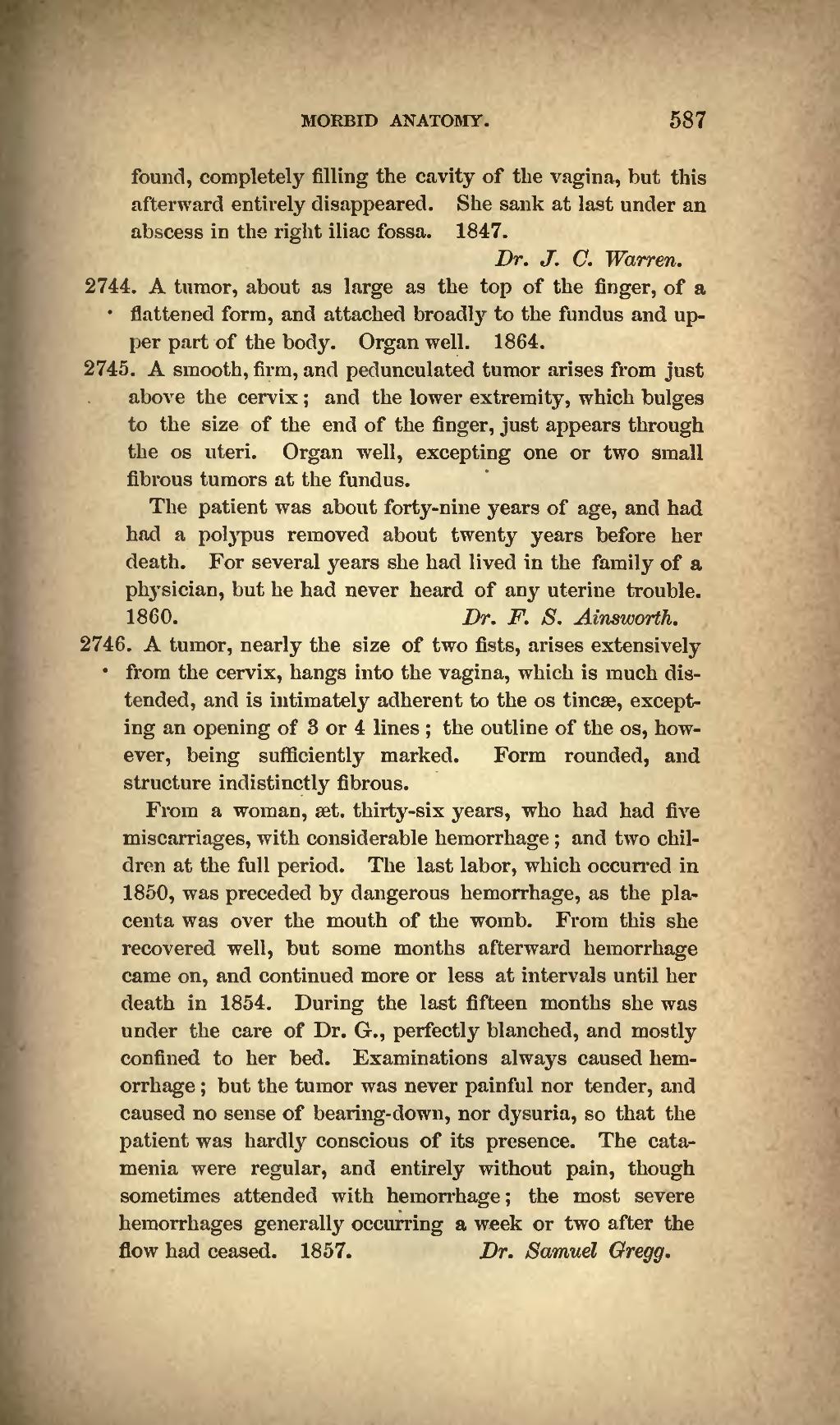found, completely filling the cavity of the vagina, but this afterward entirely disappeared. She sank at last under an abscess in the right iliac fossa. 1847.
Dr. J. C. Warren.
2744. A tumor, about as large as the top of the finger, of a
flattened form, and attached broadly to the fundus and up- per part of the body. Organ well. 1864.
2745. A smooth, firm, and pedunculated tumor arises from just above the cervix ; and the lower extremity, which bulges to the size of the end of the finger, just appears through the os uteri. Organ well, excepting one or two small fibrous tumors at the fundus.
The patient was about forty-nine years of age, and had had a polypus removed about twenty years before her death. For several years she had lived in the family of a physician, but he had never heard of any uterine trouble. 1860. Dr. F. S. Ainsworth.
2746. A tumor, nearly the size of two fists, arises extensively
from the cervix, hangs into the vagina, which is much dis- tended, and is intimately adherent to the os tincse, except- ing an opening of 3 or 4 lines ; the outline of the os, how- ever, being sufficiently marked. Form rounded, and structure indistinctly fibrous.
From a woman, set. thirty-six years, who had had five miscarriages, with considerable hemorrhage ; and two chil- dren at the full period. The last labor, which occurred in 1850, was preceded by dangerous hemorrhage, as the pla- centa was over the mouth of the womb. From this she recovered well, but some months afterward hemorrhage came on, and continued more or less at intervals until her death in 1854. During the last fifteen months she was under the care of Dr. G., perfectly blanched, and mostly confined to her bed. Examinations always caused hem- orrhage ; but the tumor was never painful nor tender, and caused no sense of bearing-down, nor dysuria, so that the patient was hardly conscious of its presence. The cata- menia were regular, and entirely without pain, though sometimes attended with hemorrhage ; the most severe hemorrhages generally occurring a week or two after the flow had ceased. 1857. Dr. Samuel Gregg.
�� �
